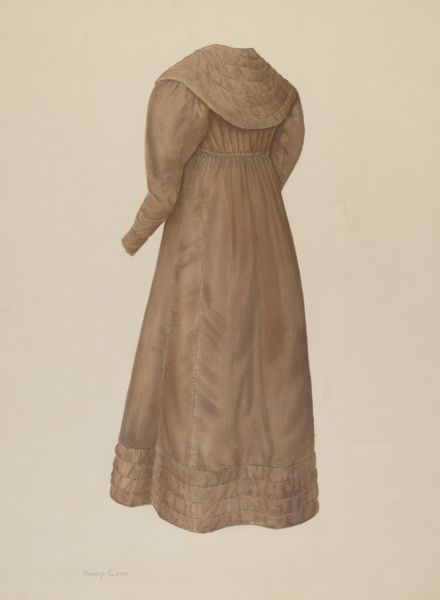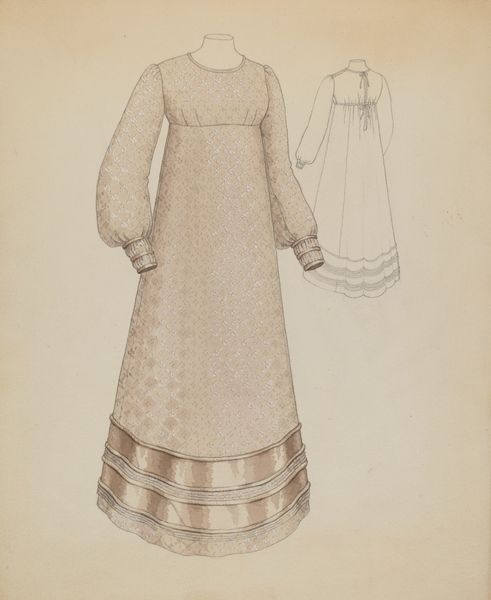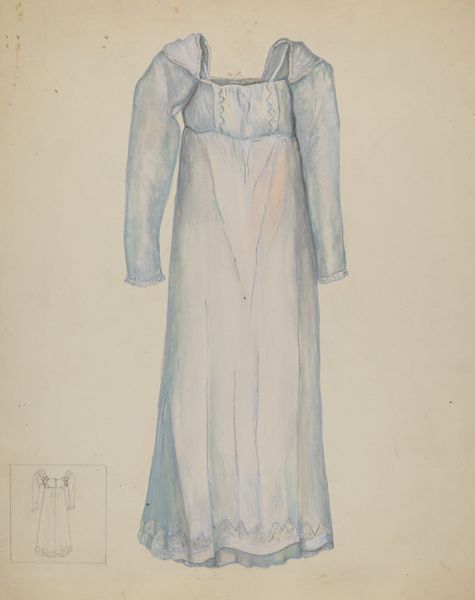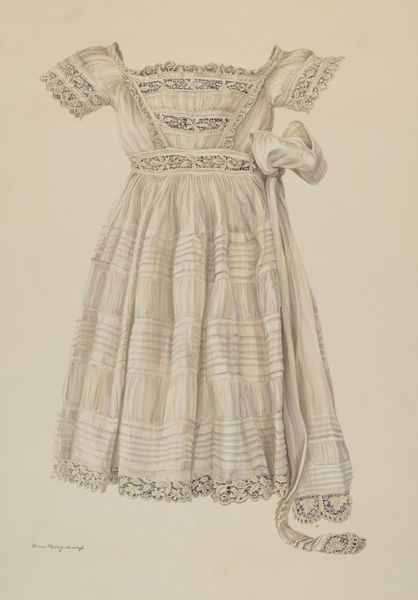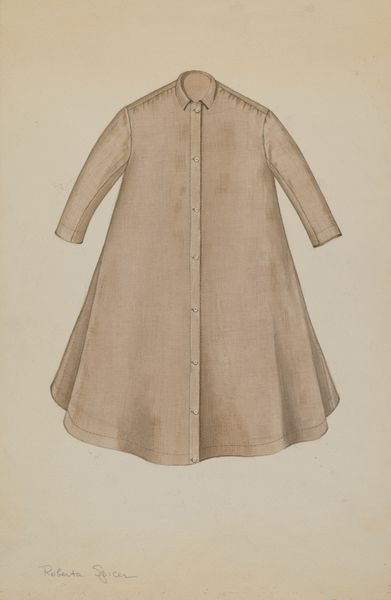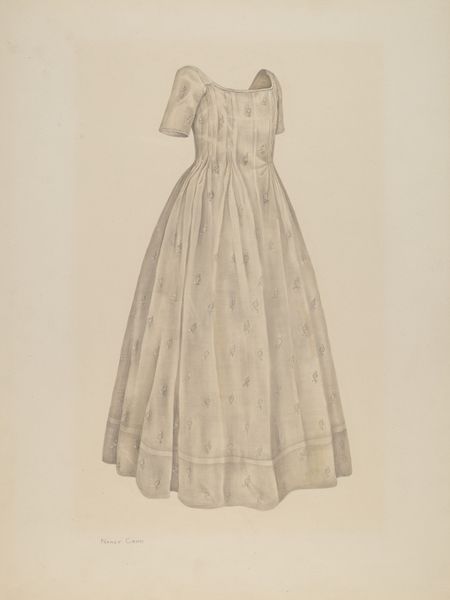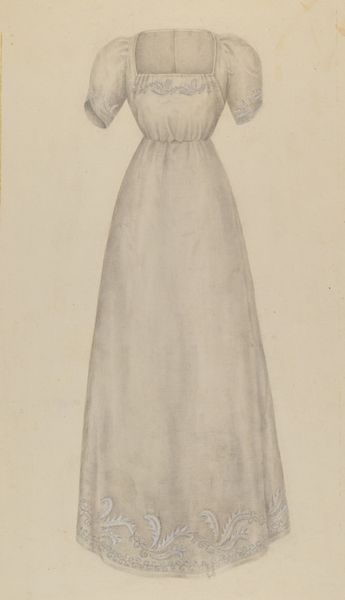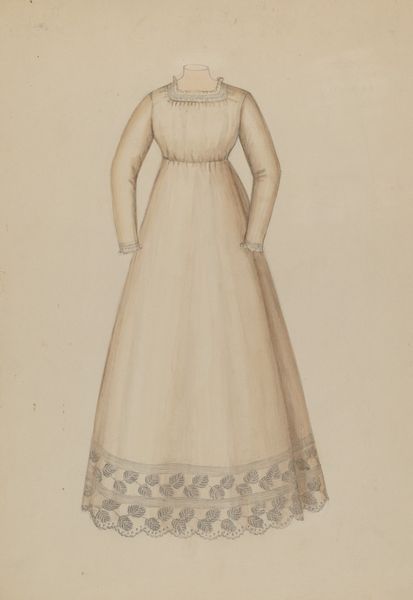
drawing, paper
#
portrait
#
fashion design
#
drawing
#
underwear fashion design
#
fashion mockup
#
collage layering style
#
fashion and textile design
#
feminine colour palette
#
paper
#
historical fashion
#
clothing photo
#
fashion sketch
#
modernism
#
clothing design
Dimensions: overall: 42.2 x 27.3 cm (16 5/8 x 10 3/4 in.)
Copyright: National Gallery of Art: CC0 1.0
Curator: Looking at this drawing, "Chemise," by Jean Peszel, created around 1939, my first thought is: How delicate. Editor: Delicate and… unassuming. It's essentially a drawing of a simple white nightgown. The lines are soft, almost ghostly, aren't they? The palette feels limited to a muted range. I'm immediately drawn to considering the artist's hand in crafting such an intimate garment, especially during this historical moment. Curator: Right. I am compelled by how the drawing highlights the craftsmanship embedded within this simple item of clothing. The medium—paper—lends itself well to representing the lightness of the material, presumably cotton or linen, intended to be worn against the skin. Look at how the artist depicted the small details of the lace trimming, suggesting a focus on the process of its construction. The texture must be nice. Editor: Absolutely, but beyond just a technical exercise in rendering fabric, it speaks to a deeper context. This chemise represents so much more than just clothing; it's an object intertwined with gendered expectations and the privacy of women's lives during this period. How might this garment represent women's rights? Curator: A very interesting suggestion. We also could focus on production by women. But you know, sometimes objects are what they seem to be and are very ordinary, just a drawing on a garment design on paper! It might show us production values and some ideas behind the scenes in manufacturing these garments for retail markets, not a feminist statment! Editor: That's a fair assessment, but let's not completely dismiss its potential as a symbolic piece. Given the date, on the eve of the Second World War, it serves as a powerful reminder of domesticity and the roles women were often confined to, as a gender, or at least pushed into roles as care providers and care givers! Curator: Certainly! And considering its potential mass production context—its material significance as a replicable item meant for a wider market—speaks to consumerism within these constructed gender roles. It highlights the socio-economic structures defining the market for female personal needs! Editor: Indeed. Whether consciously intended or not, "Chemise" reveals much about the private sphere and the silent politics embedded within it. Curator: Examining this deceptively plain artwork has really shed light on unexpected dimensions to my view of it, from manufacturing considerations to private, intimate meanings, beyond its immediate representation of underwear or simple clothing! Editor: I appreciate your highlighting the importance of context—it gives me much to consider with this artwork, including gender constructs!
Comments
No comments
Be the first to comment and join the conversation on the ultimate creative platform.


